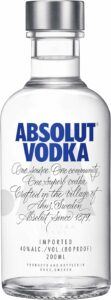Step into the enchanting streets of New Orleans with the Sazerac –
I’m your host, KAD, and I’ve been slinging drinks and navigating the world of hospitality for over two decades. I’ve perfected my bartending skills, experimented with countless flavour combinations, and learned a thing or two about how to keep the party going behind the bar.
Whether you’re a seasoned bartender like me just looking for some fresh inspiration or a complete beginner who is eager to whip up impressive cocktails at home, Shake, Sip, Serve is here to be your guide. In the below blog, I’ll be sharing my knowledge and experience on everything from classic cocktails and innovative new creations to essential bartending techniques and industry secrets.
I’ll also be offering tips on stocking your home bar, mastering the art of presentation, and creating a memorable experience for your guests. So, grab your shaker, dust off your favourite glassware, and get ready to embark on a delicious journey into the world of bartending!
Let’s Shake, Sip, and Serve up something amazing together.
Disclaimer: This post contains affiliate links. If you purchase through these links, I may earn a small commission at no additional cost to you.
A Journey Through Time: The Storied Legacy of the Sazerac
The Sazerac is often considered America’s first cocktail — a title both celebrated and debated. Its story begins in early 19th-century New Orleans, when French settlers and apothecaries introduced cognac-based tonics sweetened with sugar and balanced with bitters.
Named after the Sazerac de Forge et Fils cognac, the drink originally used brandy as its base spirit. By the mid-1800s, however, rye whiskey took centre stage, reflecting changing imports and local tastes.
The addition of absinthe gave it an edge of herbal complexity. Even when absinthe was banned in the early 20th century, bartenders kept the tradition alive with substitutes like Herbsaint. Today, with absinthe once again legal, the Sazerac has returned to its original glory.
It’s more than just a drink — it’s a cultural symbol of New Orleans, a bridge between French heritage and American cocktail innovation.
Crafting the Perfect Sazerac (Australian Twist)
Ingredients (AU Measurements):
-
60ml Australian rye whiskey (Tasmanian or Victorian craft ryes work beautifully)
-
7ml absinthe (or Herbsaint / quality anise liqueur)
-
1 sugar cube
-
3 dashes Peychaud’s bitters (or Angostura bitters as substitute)
-
Lemon peel, for garnish
Method:
-
Chill your glass: Place an old-fashioned glass in the freezer or fill with ice water.
-
Muddle sugar & bitters: In a mixing glass, crush the sugar cube with bitters until dissolved.
-
Add spirit: Pour in rye whiskey and stir with ice for 30 seconds.
-
Absinthe rinse: Discard ice from your chilled glass, add absinthe, swirl to coat, then discard the excess.
-
Strain & serve: Strain whiskey mix into the prepared glass.
-
Citrus finish: Express lemon peel oils over the top, rub lightly on rim, then discard or drop in as garnish.
⚠️ RSA Reminder: The Sazerac is strong and spirit-forward. Sip slowly, alternate with water, and keep portions small if serving multiples.
Flavour Notes: What to Expect
-
Rye whiskey: Bold, spicy backbone with pepper and grain.
-
Absinthe rinse: Herbal, anise lift that lingers on the nose more than the palate.
-
Sugar & bitters: Balances sharpness, adding depth and complexity.
-
Lemon oils: Bright top note that ties everything together.
It’s a drink to savour, not slam — every sip is a journey.
Tips for Mastering the Sazerac
-
Pick the right rye: Bold Australian ryes (often Tasmanian) stand up well to bitters and absinthe.
-
Bitters choice matters: Peychaud’s is traditional, offering floral and sweet spice notes. If using Angostura, expect more cinnamon and clove.
-
Don’t over-absinthe: The rinse should be subtle — too much overwhelms the drink.
-
Stir, don’t shake: The Sazerac is silky smooth when stirred, never shaken.
-
Glass temperature is key: A properly chilled glass is part of the ritual.
Beyond the Glass: The Sazerac Experience
Sounds of the City
Pair your sip with classic jazz or brass band recordings to recreate the Crescent City vibe.
Food Pairings
-
Gumbo or Jambalaya: Rich, spicy dishes balance the Sazerac’s boldness.
-
Charcuterie with blue cheese: Rye and anise cut through strong cheeses.
-
Dark chocolate truffles: Sweetness softens the whiskey’s intensity.
Storytelling
Part of the joy of serving a Sazerac is sharing its history. At your next dinner party, serve it as a conversation piece as much as a drink.
Variations on the Classic
-
Brandy Sazerac: A nod to the original cognac version.
-
Herbsaint Sazerac: Perfect when absinthe isn’t available.
-
Coffee Sazerac (Australian twist): Add a dash of cold brew concentrate for a local, café-inspired edge.
The Sazerac vs. Other Classics
The Sazerac belongs in the same pantheon as the Martini, Old Fashioned, and Negroni — but with a New Orleans soul.
For another bold, spirit-forward drink with a twist, try my Salted Caramel Espresso Martini – a modern Aussie riff on another global icon. Or, if you prefer something morning-friendly, check out the Coffee Wake Up Cocktail – a brunch-ready energiser.
Responsible Consumption: Enjoying Your Sazerac Mindfully
-
Sip, don’t gulp: This cocktail is an experience, not a quick hit.
-
Stay hydrated: Alternate with water between drinks.
-
Know your limits: At 60ml of rye plus absinthe, this drink is deceptively strong.
The Final Sip
The Sazerac isn’t just a cocktail; it’s a cultural icon. Born in New Orleans, shaped by history, and revived in modern bars, it embodies bold flavours, ritualistic preparation, and the magic of storytelling.
Whether you craft it with authentic American rye or give it an Australian twist, each sip connects you to a piece of cocktail heritage.
The bartending community…
The bartending community is a vibrant and supportive one, and I’m excited to build that community here on Shake, Sip, Serve.
I’d love to hear your thoughts, questions, and experiences in the comments below.
What are you shaking up these days?
What topics would you like to see covered in future posts?
Let’s connect and continue the conversation!
Liquor & Gaming NSW: This website provides information on liquor licensing, responsible service of alcohol (RSA) training, and regulations for serving alcohol in NSW. It’s essential for anyone working in the hospitality industry in NSW. You can find it here: Liquor & Gaming NSW
Check out more :
- The History of Vodka: Explore the origins and evolution of this iconic spirit, from its earliest beginnings to its modern-day popularity.
- Vodka Production Process: Learn about the intricate process of distilling vodka, from selecting grains to bottling the final product.
- Understanding Vodka Labels: Decode the terminology and information found on vodka labels to make informed purchasing decisions.
- Popular Vodka Brands: Discover some of the most well-known vodka brands around the world and what sets them apart.
- Vodka Cocktails for Every Occasion: Explore a variety of cocktail recipes featuring vodka, from classic martinis to trendy concoctions.
- The Rise of Craft Vodka: Learn about the craft vodka movement and the artisanal distilleries producing unique and flavorful spirits.
- Vodka and Food Pairing Guide: Explore the world of vodka pairing with food, including recommended dishes and flavor combinations.
- Health Benefits and Risks of Vodka Consumption: Explore the potential health effects of moderate vodka consumption and the risks associated with excessive drinking.
- Vodka Myths Debunked: Separate fact from fiction as we debunk common myths and misconceptions about vodka.
- Vodka Tourism Destinations: Discover vodka-themed travel destinations around the world, from distillery tours to vodka tastings in iconic cities.
 Disclaimer: This post contains affiliate links. If you purchase through these links, I may earn a small commission at no additional cost to you.
Disclaimer: This post contains affiliate links. If you purchase through these links, I may earn a small commission at no additional cost to you.
